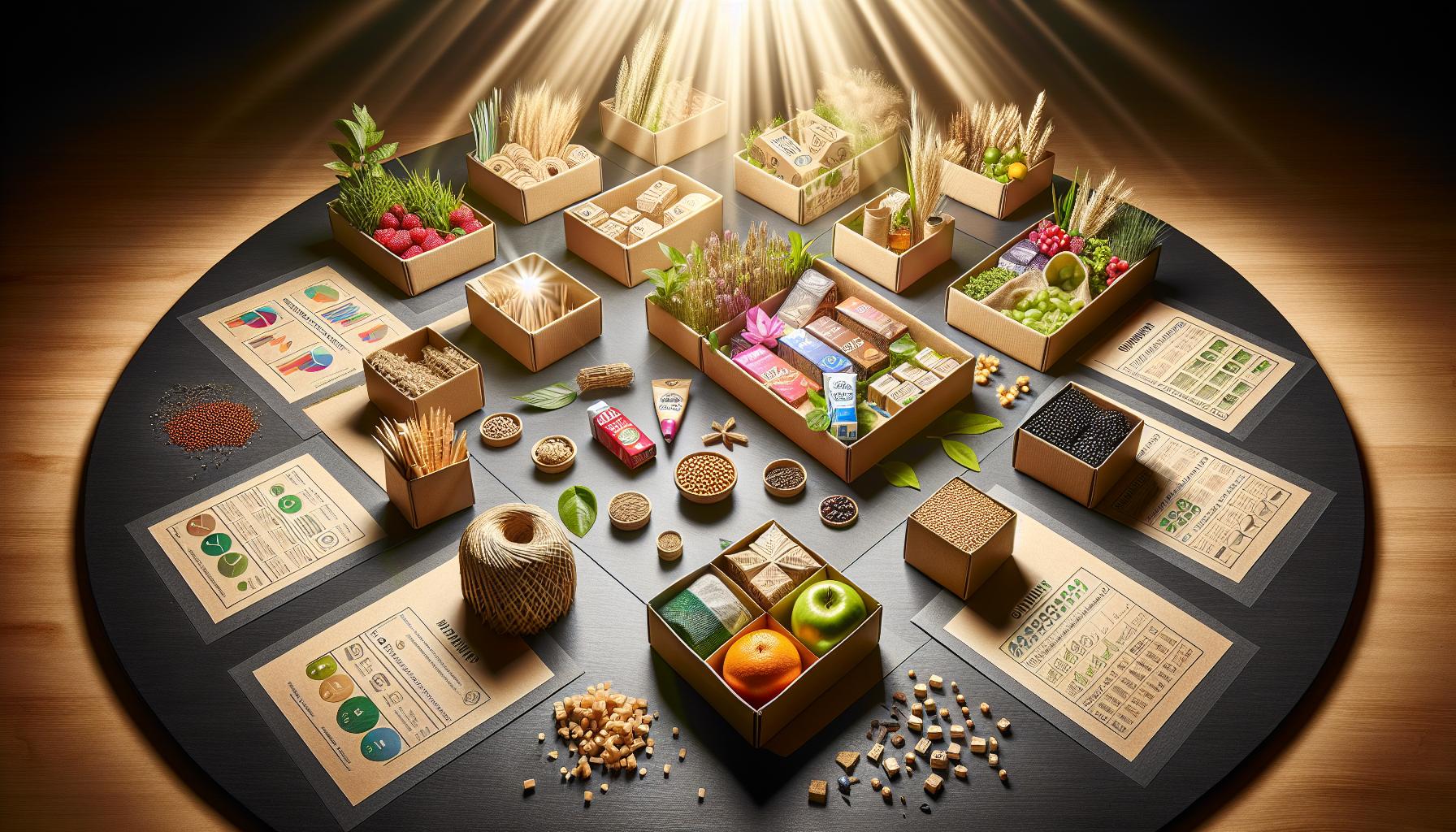Sustainable Packaging Solutions: Eco-Friendly Alternatives SWOT Comparison
Sustainable packaging solutions have gained significant traction in recent years as businesses and consumers alike become more aware of the environmental impact of conventional packaging materials. These alternatives aim to reduce waste, minimize pollution, and conserve resources. In this article, we will conduct a SWOT (Strengths, Weaknesses, Opportunities, and Threats) analysis of eco-friendly packaging options to evaluate their effectiveness and potential impact.
Assessing the Strengths of Sustainable Packaging Solutions
One of the key strengths of sustainable packaging solutions is their ability to reduce waste. By utilizing materials such as biodegradable plastics, recycled paper, and compostable packaging, businesses can dramatically decrease the amount of non-recyclable waste they generate. Additionally, sustainable packaging often has a lower carbon footprint, as it requires less energy and fewer resources to produce.
Another strength of eco-friendly packaging is its positive effect on brand reputation. In today’s environmentally conscious society, consumers are actively seeking out products that align with their values, and sustainable packaging can be a powerful differentiator. Brands that prioritize sustainability not only appeal to eco-conscious customers but also generate positive word-of-mouth and loyalty from consumers who appreciate their commitment to the environment.
Examining the Weaknesses of Eco-Friendly Alternatives
While sustainable packaging solutions offer numerous benefits, they also come with their fair share of weaknesses. One of the main challenges is the higher cost associated with eco-friendly materials. Compared to traditional packaging options, sustainable alternatives often require more investment, as the production and sourcing of these materials can be more expensive.
Additionally, the limited availability of sustainable packaging options can pose a challenge. Although efforts are being made to increase production and accessibility, eco-friendly alternatives are not yet as widely available or as diverse as their conventional counterparts. This can make it difficult for businesses to find suitable packaging solutions that align with their specific needs and requirements.
Analyzing the Opportunities for Sustainable Packaging
The rise of sustainable packaging presents numerous opportunities for businesses. With growing consumer awareness and demand for environmentally friendly products, companies that invest in sustainable packaging can gain a competitive edge. This presents an opportunity to attract new customers, differentiate their brand, and build long-term customer loyalty.
Furthermore, sustainable packaging can open doors for innovation and collaboration. As businesses and packaging manufacturers strive to develop new and improved eco-friendly materials, there is an opportunity to foster partnerships and drive research and development in the industry. This can lead to advancements in packaging technology and the creation of even more sustainable alternatives.
Evaluating the Threats to Eco-Friendly Packaging Solutions
Despite the growing popularity of sustainable packaging, there are still certain threats that need to be considered. One of the main challenges is the resistance to change from businesses and consumers. Many companies may be hesitant to adopt sustainable packaging due to the potential disruption to their existing supply chains and operations. Similarly, some consumers may be resistant to change, preferring the convenience and familiarity of traditional packaging.
Another threat to sustainable packaging is the lack of clear regulations and standards. While there have been efforts to establish guidelines and certifications for eco-friendly packaging, the absence of consistent regulations can lead to confusion and greenwashing. This makes it difficult for businesses and consumers to identify and trust genuinely sustainable packaging solutions.
Comparing the SWOT of Different Sustainable Packaging Options
When comparing the SWOT of different sustainable packaging options, it is important to consider the specific materials and technologies used. For example, bioplastics made from renewable resources may have the strength of being biodegradable, but they could also have the weakness of higher production costs compared to traditional plastics. Similarly, materials such as recycled paper and cardboard may offer the strength of being readily available and cost-effective, but they may also have the weakness of lower durability and limited suitability for certain products.
In conclusion, sustainable packaging solutions offer numerous strengths, including waste reduction and positive brand reputation. However, they also face weaknesses such as higher costs and limited availability. The opportunities lie in capturing environmentally conscious consumers and fostering innovation, while the threats include resistance to change and the lack of clear regulations. When comparing different sustainable packaging options, it is crucial to consider their unique SWOT factors to make informed decisions about which alternatives best suit specific business needs and objectives.













